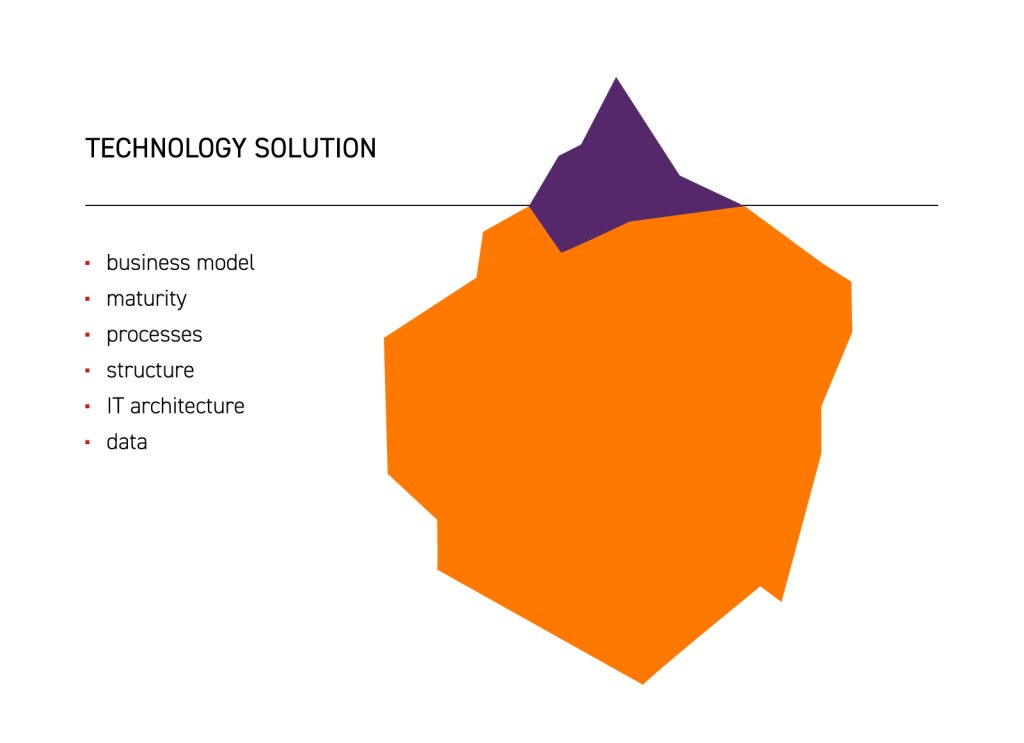How to Implement Omnichannel Strategy in Your Company
There is a lot of talk about omnichannel strategy, but when it comes to the practical implementation of this sales model, the matter is not so simple anymore. Companies face a number of technology and process challenges that they must overcome in order to orchestrate the elements of an omnichannel strategy into a cohesive shopping experience. Achieving synergies across each channel requires a number of changes and the creation of an effective strategy. Want to know how to do it? Read on!
TL;DR
A successful omnichannel strategy is customer-centric and the result of thoughtful analysis and planning. It involves assessing the current situation, preparing the organization for change, conducting a technology audit, planning activities, and establishing key success metrics. The goal is to create efficient omnichannel marketing strategy and provide excellent customer experience in multiple channels.
What Is an Omnichannel Strategy?
An omnichannel digital strategy is a long-term, systematic approach to doing business that seeks to synchronize multiple sales and distribution channels, both online and offline. The goal is to boost sales across multiple platforms and create a consistent, seamless customer experience across all channels.
Increasing digitalization, social media, mobile apps, new technologies, and new ways of marketing and selling are changing the customer journey. Omnichannel customers expect a seamless experience regardless of whether they’re using a desktop or mobile device, brick and mortar stores or online marketplaces.

At the same time, consumers expect relevant content across all the channels (sufficient product information, to name just one example) and their shopping history to be preserved, whether they shop online or at the physical store. This is where a company must pay special attention to the consistent customer experience.
An effective retail omnichannel strategy should focus on identifying and meeting customer needs. After all, a great customer experience is what matters most to 80% of clients. This is why companies need to adopt an omnichannel approach and constantly build a consistent experience in all relevant customer touchpoints.
However, while the promise of the omnichannel strategy seems high-minded, the reality is far more complicated.
So Why Doesn’t the Omnichannel Strategy Work?
Companies today are all over the map when it comes to implementing omnichannel strategies. On the one hand, we have leaders who are ahead of the competition and building a positive and consistent brand experience and image through a modern omnichannel model. We can draw inspiration from them and look at interesting solutions. At the other end of the spectrum are companies that have yet to implement an omnichannel strategy. In between these extremes are a variety of companies that are implementing an omnichannel sales strategy with varying degrees of success, yet are still struggling with various challenges.
These hurdles fall into three main categories. Each organization’s “mix” of challenges may be different, so it is important to identify the pain points you need to address in order to successfully implement omnichannel sales.

Organizational and Strategic Challenges
It may seem easier and faster to act on the “element,” but such an approach usually does not end well. However, the implementation of an omnichannel experience is a strategic change, so it requires transforming [EM1] many aspects of the organization’s operation and development. It requires a lot of questioning and analysis, which undoubtedly takes some effort. In the long run, however, it is the only sensible approach. We have seen situations where huge budgets have been spent on solutions that are too advanced for the company’s needs or too “small” to address all the important aspects of the business.
Another problem lies in underestimating the human factor in implementing digital change. And this is a serious mistake because technology is just the tip of the iceberg. A successful transformation cannot happen without the support of employees. They need to understand the purpose of the change and how it will affect the organization and their daily work. Reluctance to change is natural, so managers charged with creating and implementing an omnichannel strategy should invest in educating and aligning employees’ knowledge.
Defining a common vision, complete with goals and answers to tough questions, is the foundation for implementing an omnichannel experience.
The IT department has a critical role to play in this process, taking on the role of business strategy partner. An omnichannel approach requires the implementation of appropriate IT systems and the right skills in the team. This is an area where the IT director can drive change and be a true partner to the business.
Process Challenges
Clutter and chaos wrapped in the latest digital technology is still the same clutter and chaos. Imagine that different departments are responsible for different sales, different channels, and different product categories. Over the years, each department develops its own way of doing things, such as online or in store sales. Teams use various tools and different ways to organize marketing campaigns and acquire new customers. In such a situation, it is necessary to organize the company’s processes before developing and implementing an omnichannel strategy.
Technological Challenges
Preparing your organization and rethinking your processes are important steps in implementing an omnichannel strategy but, in the end, you need to make omnichannel actually work.
It is at this point that several technological barriers emerge that can pose serious challenges to the implementation of an omnichannel strategy. What kind of challenges are we talking about?
Some companies may be using e-commerce systems that are too stiff. Any change to a small component can affect the operation of the entire system, making any changes time consuming and complicated. In a dynamic business environment, this is not a desirable situation. In addition, such systems, usually legacy monoliths, do not perform well under increased traffic and load.

Another common technology problem comes in the form of ineffective system integration and legacy systems. A key goal of omnichannel is data consistency between multiple channels together, so the lack of effective system integrations leads to a number of further problems, such as slower order processing and customer service, more manual work for employees, and errors.
What Are the Characteristics of a Good Omnichannel Strategy?
Good omnichannel strategies are first and foremost based on an honest analysis of the company’s situation and a deep understanding of customer expectations and customer journey.
Your strategy should take your organization’s readiness for change, processes, and technology issues into account. Depending on the company, an omnichannel strategy will focus on slightly different aspects. You need to understand which areas have the most room for improvement and where the biggest priorities are.
A successful omnichannel strategy also defines business goals and measures of success. These may include increasing company or channel sales, increasing basket value, increasing shopping frequency, customer loyalty, and so on.
Of course, the issue of customer satisfaction cannot be overlooked. An omnichannel strategy should be designed with customer experience at the fore. Clients need to feel that the communication, sales process, in store experience, or after-sales service is similar or the same regardless of the channel they use.
Moreover, good omnichannel strategy is designed from the outset to collect and analyze data to better understand customer preferences and learn from their actions. This paves the way for optimizing the marketing and sales strategy and providing even better customer service later on.
Successful Omnichannel Strategy Examples
The omnichannel strategy is very popular in the fashion industry, and a great example of a brand implementing an omnichannel model is LPP and the Reserved brand. Consistent communication in each channel, the ability to keep transaction history even when shopping in a brick and mortar store, easy returns, and personalized marketing are just some of the features of the omnichannel strategy implemented by Reserved.

However, the omnichannel strategy is not exclusively reserved for fashion companies.
SIG, one of Europe’s leading suppliers of building materials, has implemented a modern B2B omnichannel. The company has implemented a B2B e-commerce platform that is linked to the its other sales channels. Interestingly, it is not uncommon for SIG customers to start the buying process in one channel and complete it in another. For example, a customer may call a sales representative to place an order, only to then complete the transaction in the online store. By supporting customers in this way, SIG’s omnichannel strategy has paid off — the company has seen a 142% increase in online store sales.

.
Step-by-Step Omnichannel Strategy
Now that you’re aware of the challenges of implementing an omnichannel retail strategy in your company, and you know what such a strategy should look like, let’s try to put everything into a clear action plan.
Step 1 / Assess the Current Situation
First, take a look at your sales channels and compare them to the buying paths and needs of your target audience and customers. You need to know which channels they use and how they want to buy. Examine whether the path to purchase and the customer journey to engagement differ by segment or product category.
Examine the popularity and functions of the various online channels. You may find that one channel drives sales in another, so don’t judge channels based on sales volume alone.

Step 2 / Assess Your Organization’s Readiness for Change
As you already know, not preparing your organization for change is a major barrier to implementing a successful omnichannel digital strategy. Make sure you have the support of decision-makers and communicate transparently with employees. Also consider whether you have people on your team who can develop, maintain, and use the tools implemented in the omnichannel model. Check that your company’s key processes are described and structured.
Step 3 / Look at the Technical Aspects
Once the company’s business model and processes have been mapped, it’s time to examine the existing IT architecture to identify potential constraints and barriers to implementing an omnichannel approach. Review what systems are in place and how they are connected. Confirm whether you can use the existing architecture or if you need to redesign it. This approach will enable you to optimize existing resources and avoid unnecessary expenses. Remember that the solutions you design should be easy to use in other markets, segments, or departments within the organization. This will make it much easier for the company to scale its operations in the future.
Step 4 / Create an Action Plan
If you already know which channels you want to develop and your organizational and technological limitations, it’s time to develop an action plan and estimate costs.
Decide where you will start, set milestones and measures of success. Consider whether you can handle the project yourself or whether you need an external partner. In your plan, don’t overlook the issue of adoption. Simply implementing the technology is not enough. For every $1 spent on a digital solution, you should spend at least another $1 to ensure full adoption by the organization.
Step / 5 Measure, Verify, Optimize
Omnichannel is a strategy that needs to be constantly monitored and optimized. Technology, customer preferences and trends change. It is necessary to constantly monitor the situation and adapt the omnichannel strategy to current conditions.
What measures of success are worth adopting? There is no single answer to this question, and it depends on your goals. However, we can group the indicators into three categories.
1. Business Impact of the Omnichannel Strategy
Here you can study how sales performance, basket value, number of customers, customer, customer lifetime value, and the like change.
2. The Impact of Omnichannel Strategies on Team Performance
These metrics will help you see how effectively teams are executing OKRs, how quickly they are able to launch a new product, by how much they have reduced order fulfillment time, how many customers they are able to serve at a lower cost to sales, and so on.
3. Degree of Implementation of the Omnichannel Retail Strategy
With these indicators, you can determine how many of the planned channels have been successfully launched, how many employees have been trained, how many processes have been organized and described.

What Is Your Omnichannel Sales Strategy?
Implementing or improving an omnichannel strategy can seem overwhelming at first. The list of issues that need to be considered, analyzed, and developed is quite long. Channel integration is essentially a change management project, so you need to be patient and prepared for things not to always go according to plan. However, it is important to keep moving forward and constantly improve omnichannel sales. Even small changes can have a positive impact on increasing sales and improving the customer experience.
If you want to minimize the risks in this process and learn more about selling products in the omnichannel model, you already know where to look for support 😉







